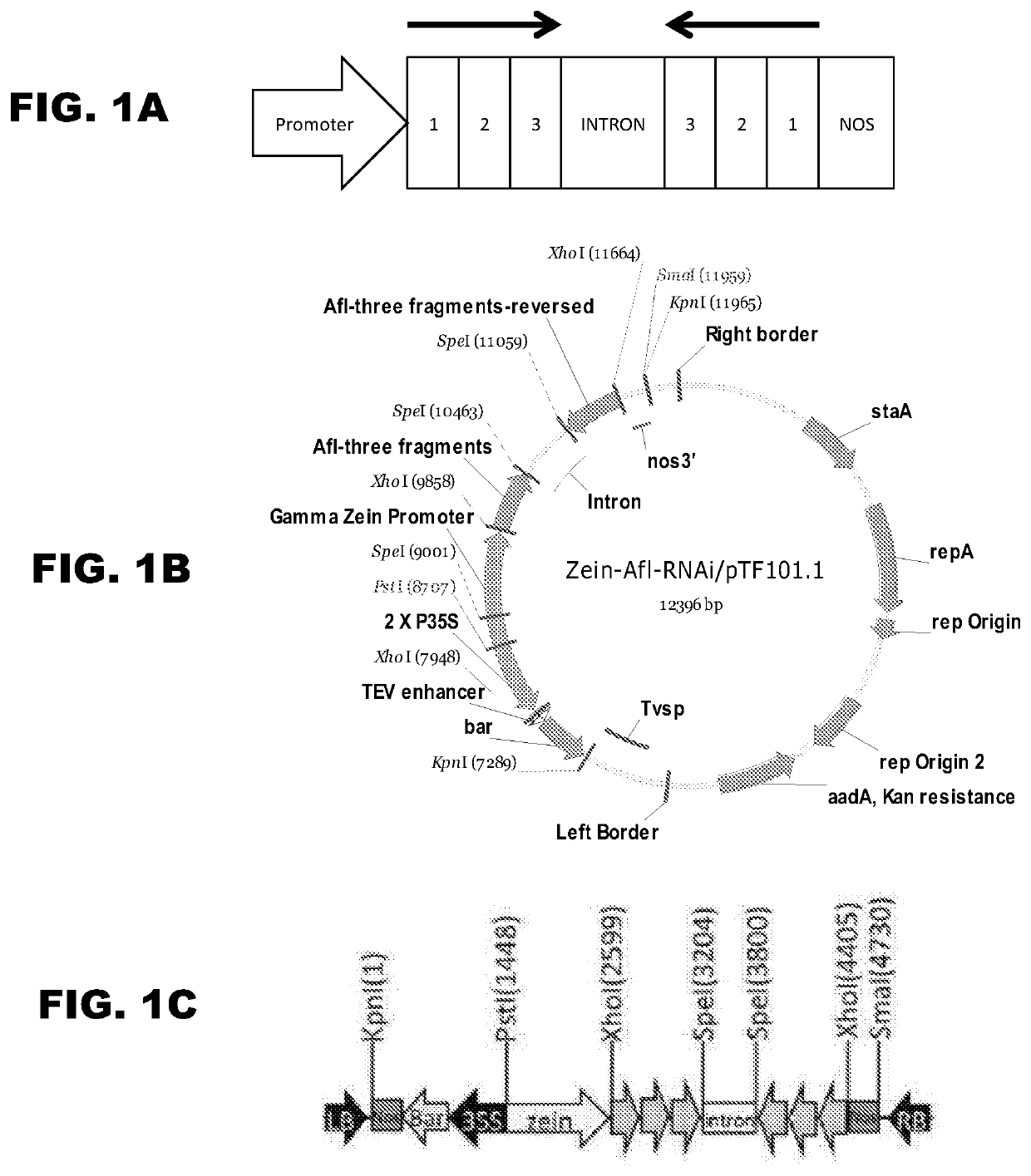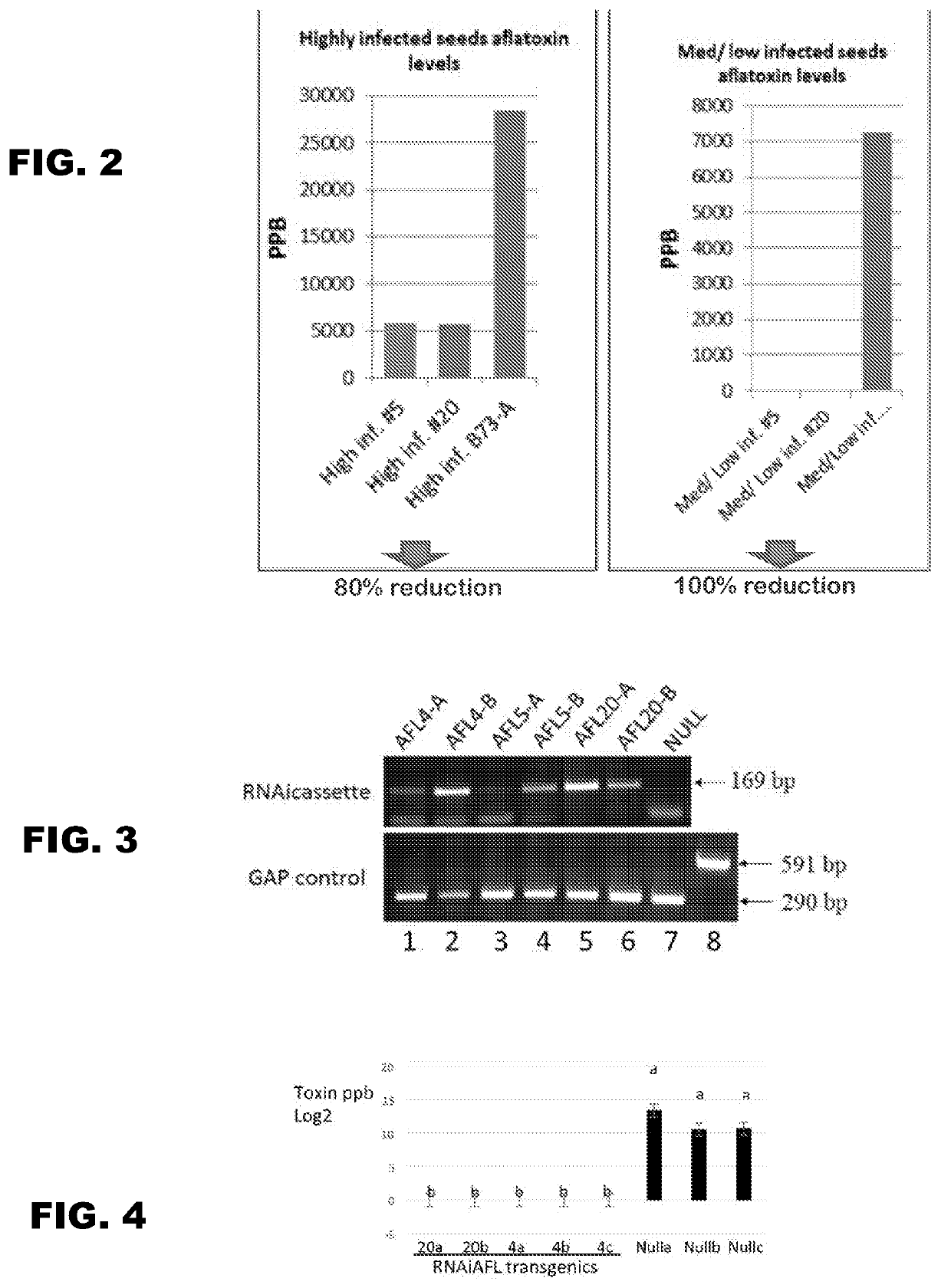Transgenic plant species engineered to inhibit biosynthesis of Aspergillus aflatoxin
a technology aflatoxin, which is applied in the field of transgenic plant species, can solve the problems of threatening food security and human health, mass agricultural losses worldwide, and net loss of 16 million tons of maize, and threatening greater agricultural development. , the effect of increasing the number of aflatoxins
- Summary
- Abstract
- Description
- Claims
- Application Information
AI Technical Summary
Benefits of technology
Problems solved by technology
Method used
Image
Examples
example 1
[0052]Example 1 describes the production of transgenic plants of the present invention, e.g., aflatoxin-free transgenic peanuts / maize (e.g., production of Aspergillus resistant aflatoxin-free transgenic peanut / maize by co-expressing, individually and together, the cell-penetrating antifungal plant defensing RNAi suppression cassette directed against an aflatoxin biosynthesis gene). The present invention is not limited to the methods, systems, and components described herein.
[0053]Transgenic maize plants can be transformed and regenerated expressing an endosperm-specific RNAi suppression cassette targeted to the polyketide synthase aflatoxin biosynthesis gene (RNAi aflC). Transgenic peanut plants can be transformed and regenerated expressing a seed-specific RNAi suppression cassette targeted to the polyketide synthase aflatoxin biosynthesis gene (RNAi aflC). The resultant transgenic plants (e.g., maize kernels, peanut seeds) can be analyzed for Aspergillus resistance and aflatoxin pr...
example 2
[0062]Example 2 describes examples of RNAi cassette production and production of transgenic plants. The present invention is not limited to the methods, systems, and components described herein.
[0063]An RNAi cassette consisting of 3 head-to-tail sections of the Aspergillus aflC gene was constructed to ensure the fungal transcript was fully targeted and degraded by suppression. The RNAi cassette was expressed in a kernel-specific manner in transgenic maize (see FIG. 1C). A 1.1 kb gamma-zein endosperm-specific promoter was used to direct expression of the RNAi cassette targeting suppression of the fungal polyketide synthase gene in a vector having bialaphos resistance as a plant selectable marker. Maize transgenic plants were obtained via Agrobacterium-mediated transformation of a B73 hybrid line. Transgenic maize lines were grown to the T3 homozygous generation by repeated rounds of regeneration and molecular analysis. Plants were screened by genomic PCR for the presence of the selec...
PUM
| Property | Measurement | Unit |
|---|---|---|
| temperature | aaaaa | aaaaa |
| volume | aaaaa | aaaaa |
| bialaphos resistance | aaaaa | aaaaa |
Abstract
Description
Claims
Application Information
 Login to View More
Login to View More - R&D
- Intellectual Property
- Life Sciences
- Materials
- Tech Scout
- Unparalleled Data Quality
- Higher Quality Content
- 60% Fewer Hallucinations
Browse by: Latest US Patents, China's latest patents, Technical Efficacy Thesaurus, Application Domain, Technology Topic, Popular Technical Reports.
© 2025 PatSnap. All rights reserved.Legal|Privacy policy|Modern Slavery Act Transparency Statement|Sitemap|About US| Contact US: help@patsnap.com


